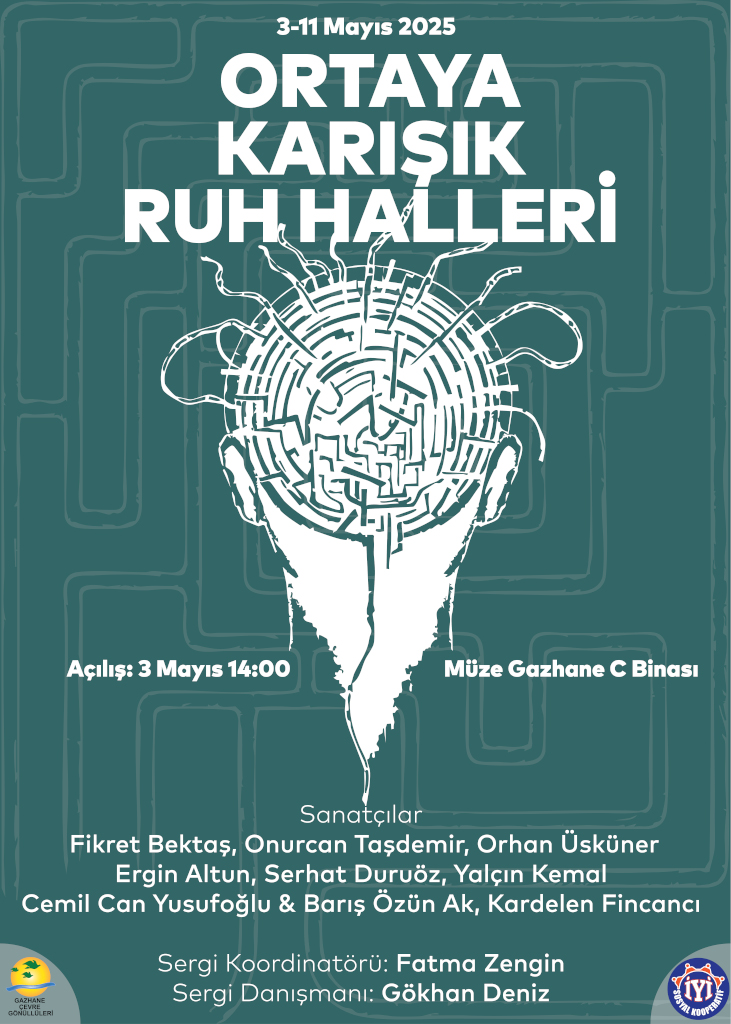Kardelen Fidancı
In today’s world, where we are surrounded by dead public spaces as Sennett describes it, genuine public space is hard to find. But we had the opportunity to experience in our own exhibition that things are different at the Gazhane with grassroots movement. We cannot thank enough to the Gazhane Environmental Volunteers who have been able to hold this public space for us and continue to hold it (and hopefully will do so despite everything). We appreciate your existence.
In our contemporary times when everyone’s (literally everyone’s) moods are extremely mixed, our audience, who started to visit the exhibition even before we finished setting it up, never left us alone throughout week. Despite our little publicity in the press and social media, everyone who came there, with or without information, and the circulation of people who came back again and again, convince us that we obviously did something meaningful. How? For a week, we experienced first-hand the definition of a collective experience that Negt and Kluge use to define a genuine public space. I am not talking about an experience that only we, the exhibition team, transferred, as what is customary: Our exhibition became a space where the audience could also transfer their experiences. The exhibition has transformed with everyone’s experiences who passes by. Whether it is a child playing ball outside, a person on his way home from work, or a family on a weekend trip could share experience together. Both art lovers and those who have never had much to do with art came, but utmost, our exhibition was able to include everyone in the same space. I guess that’s why we spent every day to the fullest and broke away from the usual exhibition system that doesn’t have many visitors other than the opening night. We clicked and our exhibition functioned as Bourriaud’s relational apparatus and allowed us to experience relational aesthetics. Perhaps we can think of this experience as in terms of the concept of “engagement” through Lacy, which she uses to describe the art practices in public space. Or Groys’ concept of functional aesthetics, which he puts against the modernist aesthetics dominated by the eye, which is afraid to be touched and entered… But what all these terms have in common is to have an experience together – with the artist, and with the audience – to establish that genuine public space, that collective experience. In a short period of one week and with limited publicity, our exhibition was visited by 1000-1500 people on average. The consensus among the people who wrote in the exhibition experience book was that they had never experienced such an exhibition before. We were merrily surprised and all smiles, we realized that this exhibition opened a space for anyone to experience their uniqueness and enabled us to coexist all at once.
Sennett, R. (1992), The Fall of the Public Man, W.W. Norton & Company.
Negt, O., Kluge, A., (1993). Introduction,” Public Sphere and Experience: Toward an Analysis of the bourgeois and Proletarian Public Sphere, trans. Labanyi, P., Daniel, J. O., Oksiloff, A., Minneapolis: University of Minnesota Press, xlvi-xlix.
Lacy, S. (1995), “Cultural Pilgrimages and Metaphoric Journeys”. Mapping the Terrain, ed. Suzanne Lacy. 2nd ed. Seattle, Washington: Bay Press, 19-49.
Bourriaud, Nicolas. (2002). Esthétique Relationalle. [Dijon]: Les Presses du reel.
Groys, B. (2014). On Art Activism. E-Flux Journal, No. 56.
